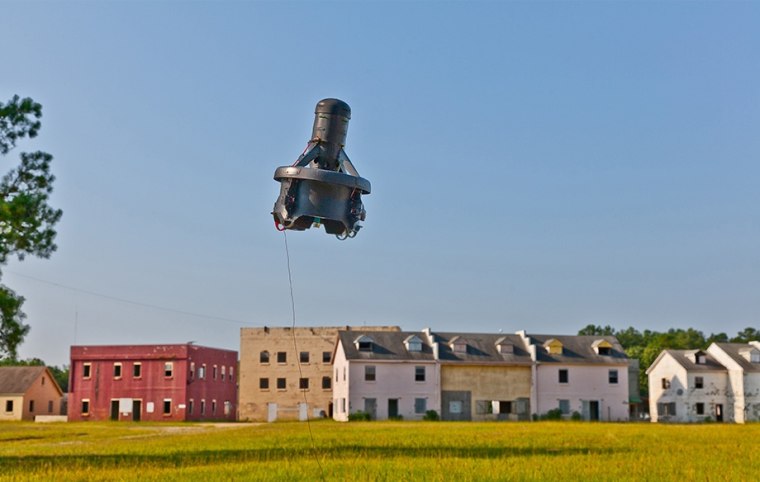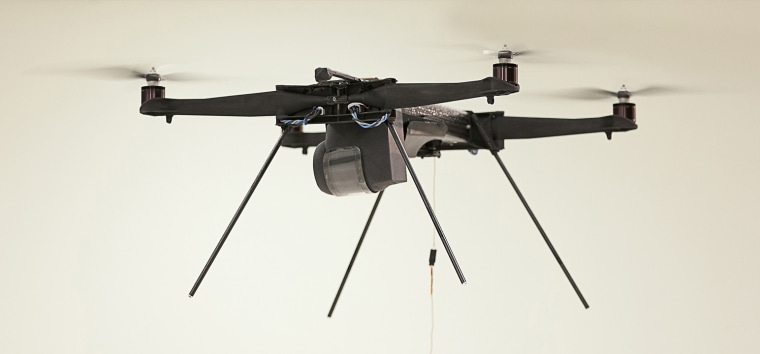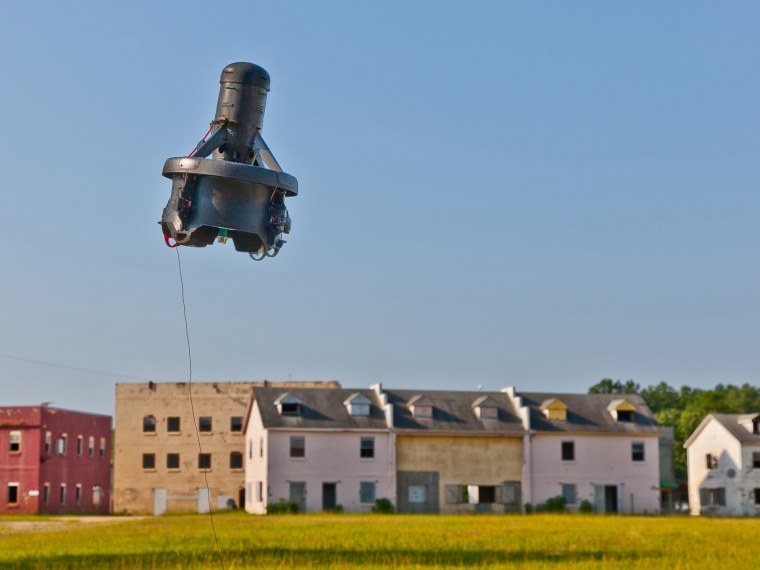
Little flying robots can walk your kids to the bus, keep you company on a jog, spy on the neighbors and find earthquake survivors. But they work only as long as their batteries do, which typically isn’t longer than an hour, if that.
Robots unveiled this week from CyPhy Works get around this problem with a " fishing-line thin" wire called a microfilament that powers the robots from the ground, using a large battery or the electric grid. It also provides secure wired communications and control of the robots, preventing interception or jams by hackers that can occur with radio communications.
CyPhy Works, a firm created by iRobot co-founder Helen Greiner, unveiled two models: the Extreme Access System for Entry (EASE) and the Persistent Aerial Reconnaissance and Communications (PARC). Both have high-definition cameras and serve as eyes-in-the sky for a range of surveillance tasks.
The EASE is the smaller of the two — portable in a backpack and powered from its ground control system by a hot-swappable battery. This little fan-powered vertical-take-off-and-landing craft is the type of thing search and rescue crews could carry to an earthquake zone to search for survivors, or military units could use in the field to peek across enemy lines. It is "able to fly through doors and windows," says CyPhy.

PARC is a more familiar quadrotor design, intended for more long-term surveillance and communication tasks from a singular location. Its filament is connected to the electric grid.
The magic in both, the company says, is the microfilament itself, which uses patented technology to cram so much information and juice into such a thin wire. Another key here is that the wire is coiled inside of the robot, not the ground control system. "Spooling out from the air vehicle means that the air vehicle's movement is never restricted by the microfilament and it eliminates the possibility of snagging, binding, or otherwise tangling," according to CyPhy.
If something does happen to that lifeline, both flying robots can land safely — and autonomously —thanks to their small onboard back-up batteries.
You can check out the EASE in action in the video below as it flies around an old fort, perhaps the setting for a post-apocalypse Western.
– via Gizmag
John Roach is a contributing writer for NBC News Digital. To learn more about him, check out his website. For more of our Future of Technology series, watch the featured video below.
